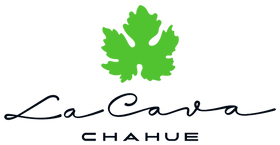The old man, who thought he had lost his luck as a fisherman, ventured out to the sea carrying his hopes and expecting to achieve a feat that would prove the strength of his remarkable will (The Old Man and the Sea, Ernest Hemingway). This story shows us that sometimes the limits or boundaries are in our imagination. We can move creatively and consistently when we maintain hope, strength and if, above all, we can push ourselves to the limit in the constant attempt to achieve our dreams.
The history of Californian wine is just like this. It has Spanish origins, and it started with the Franciscan missionary Junipero Serra, considered the father of Californian wine because he planted the first vineyard (presumably from Mexican plantations) at Mission San Diego de Alcalá in 1769.
The Californian wine had significant problems surviving in the modern age, mainly because of the Prohibition Law established between 1919 and 1933 that practically put an end to it. From the second half of the 20th century, California produced 90% of American wine in the Sonoma and Napa valleys, where immigrants of European origin (Mondavi, Winarski, Gringich, Paschich, or Tchelistcheff) sought to recover the cultivation of vines.
At that time, French wines were the reference worldwide. They had a great tradition and a whole quality system based on a concept they call terroir, related to the type of soil in which the vines are grown. The terroir of the wine is the sum of all its parts: geology, weather, topology, water retention capacity, and the amount of sun it receives. From the French point of view, the terroir is what makes each vineyard different.
For their part, the North Americans created a quality system that controls the yields and qualities of the wines. This system is known as AVA (approved viticultural area):
- AVAs are a type of geographical identity used throughout the country.
- When the AVA sign appears on the label, the wine contains 85% of grapes from that region.
- If it mentions a grape, it must have 75% of grapes from that area.
- If it cites a vintage, the wine must contain 95% of grapes from that specific year.
It wasn't until the 70s that the world turned its attention to Californian wines, which had a bad reputation until then. The event that changed this history was the so-called "Judgment of Paris," on May 24, 1976, when Steven Spurrier and Patricia Gallagher organized a blind tasting between French and Californian wines at the Intercontinental Hotel in Paris.
The Californian Chardonnay wines selected were: Chateau Montelena 1973, Chalone Vineyard 1974, David Bruce Winery 1973, Freemark Abbey Winery 1972, Spring Mountain Vineyard 1973, Veedercrest Vineyards, 1972. The Cabernet Sauvignon wines were: Stag's Leap Vineyard 1973, Clos Du Val Winery 1972, Freemark Abbey Winery 1969, Heitz Cellars Martha's Vineyard 1970, Mayacamas Vineyards, 1971, Ridge Vineyards Monte Bello 1971. The French Chardonnay wines were: Bâtard-Montrachet Ramonet-Prudhom 1973, Beaune Close des Mouches Joseph Drouhin 1973, Mersault Charmes Roulot 1973, Puligny-Montrachet Les Pucelles Domaine Leflavie 1972 and the Cabernet sauvignon were: Château Haut-Brion 1970, Château Léoville-Las-Cases 1971, Château Montrose 1970, Château Mouton Rothschild 1970.
The criteria to be assessed were sight, nose, mouth, and harmony. Each received a score from 0 to 20 points, which was a French criterion. The white wines were tasted first, and it was evident that the judges could not distinguish whether they were French or Californian. Spurrier intended to publicize the New World wines, so he obviously expected the French wines to win.
The highest-rated wine was the Californian Chateau Montelena from 1973. The second, a French wine, the Mersault Charmes from the same year. Among the top four, there were three American wines. The French judges were simply astonished.
The second tasting was with the cabernets. The winner was the 1973 Stag's Leap Wine Cellars, and with one point of difference, the 1970 Château Mouton Rothschild was the second best. In addition, the top 5 runner-ups included all 4 French wines. Once again, the judges were skeptical.
The journalist George Taber, Time's Paris correspondent, published an eight-page article in Time magazine, from which the term "Judgment of Paris" was coined. This story is well represented in the movie Bottle Shock.
California is the place where all possible winemaking techniques are tested. The key to the progress made in winemaking lies in introducing French oak barrels and stainless steel vats to control fermentation temperatures.
Among the varieties produced for red wine are: zinfandel, cabernet sauvignon, grenache, pinot noir, merlot, cabernet franc, petite syrah, carignan, barbera, gamay, sauvignon blanc, among others. For white wine it produces: chardonnay, colombard, chenin blanc, sauvignon blanc, muscat blanc, riesling, gewürztraminer, sémillon, Pinot blanc, Pinot gris, Roussane, Trousseau gris and Viognier.
California has more than 1,730 square kilometers of planted vines, primarily located in a stretch from Mendocino County to the southwestern tip of Riverside County. There are four wine regions in California: North Coast, where Napa, Sonoma is located. Mendocino and Lake County; Central Coast, which includes Santa Clara Valley, Santa Cruz Mountains, San Lucas Paso Robles, Santa Maria Valley, and Santa Ynez Valley; South Coast, which encompasses Temecula Valley, Antelope Valley/Leona Valley, Pasqual Valley, and Raoma Valley; and finally, the Central Valley, which includes Lodi.
